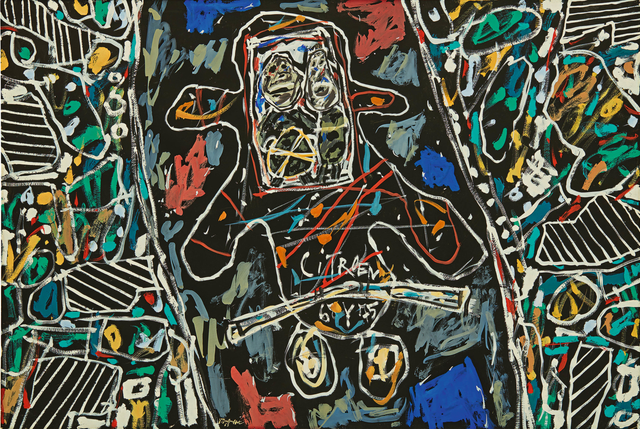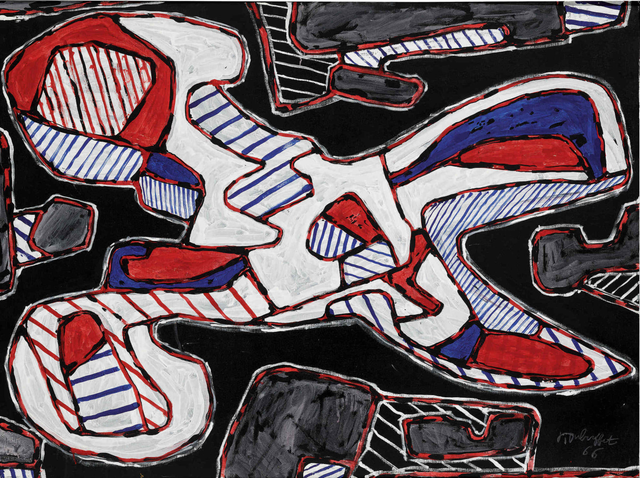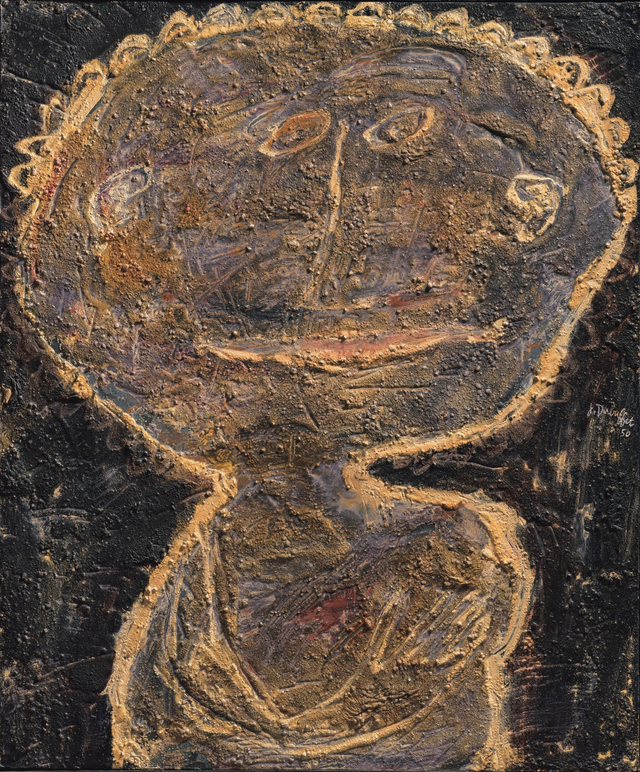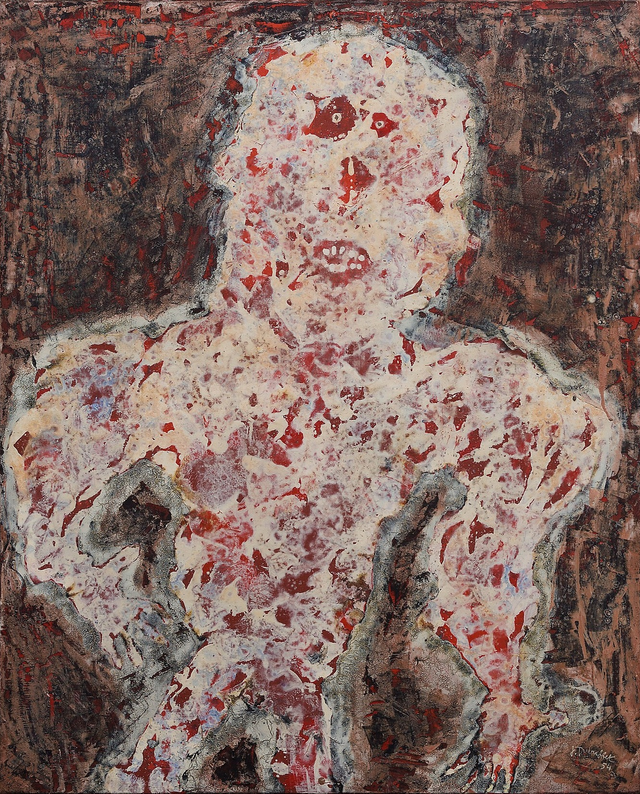Jean Dubuffet
Jean Dubuffet was a French artist known for his innovative and unconventional approach to art, which challenged traditional notions of beauty and aesthetics.
Biography of Jean Dubuffet
Dubuffet was born in Le Havre, France, and studied art at the Académie Julian in Paris. At that time, Jean Dubuffet formed deep friendships with notable artists Juan Gris, André Masson, and Fernand Léger, forging strong bonds based on their shared artistic pursuits and creative visions.
Disenchanted with formal academic training, Jean Dubuffet departed from the Académie Julian and embarked on a journey of independent study. During this time, Dubuffet delved into many other interests and pursuits, expanding his horizons beyond the constraints of traditional art education. The artist also traveled to Italy and Brazil.
After his return to Le Havre in 1925, Jean Dubuffet entered a new chapter of his life. He ventured into the world of entrepreneurship, establishing a small wine business in Paris. However, his passion for painting never waned, and in 1934, he reignited his artistic flame.
During this period, Dubuffet dedicated himself to creating an extensive series of portraits, placing great emphasis on capturing the ever-changing artistic trends throughout history. He again paused his art career to focus on developing his wine business.
In 1942, Dubuffet decided to devote himself to art again. Drawing inspiration from the mundane aspects of everyday life, he frequently selected subjects for his artworks from the bustling scenes of people in the Paris Métro or the tranquil walks in the countryside. His dedication and artistic vision culminated in his first solo exhibition at the Galerie Rene Drouin in Paris in October 1944.
Inspired by Fautrier, Jean Dubuffet experimented with his artistic materials, incorporating unconventional elements into his work. Thick oil paint served as his foundation, mixed with mud, sand, coal dust, pebbles, string, straw, plaster, gravel, cement, and even tar.
After 1946, Jean Dubuffet created a captivating series of portraits featuring some of his closest friends as his subjects. Among them were Henri Michaux, Francis Ponge, George Limbour, Jean Paulhan, and Pierre Matisse.
In 1947, Dubuffet achieved another milestone by holding his first solo exhibition in America.
From 1947 to 1949, Jean Dubuffet embarked on three distinct journeys to Algeria, which was then under French colonial rule. The artist undertook these trips to find additional artistic inspiration.
In 1948, Jean Dubuffet sought a connection with the surrealist group, recognizing the potential for artistic exchange and collaboration within their ranks.
In June 1948, Jean Dubuffet played a pivotal role in the establishment of La Compagnie de l'art brut in Paris. He did this alongside influential figures such as Jean Paulhan, André Breton, Charles Ratton, Michel Tapié, and Henri-Pierre Roché.
Jean Dubuffet's art style
Dubuffet's early work was influenced by Surrealism. Eventually, he developed a unique style characterized by rough, textured surfaces, and primitive, childlike forms. He was particularly interested in the concept of Art Brut, or "raw art," which referred to the work of artists who created outside of mainstream cultural institutions.
Dubuffet championed the work of Art Brut artists, believing that their unconventional approach to art offered a more authentic and direct expression of the human experience. He incorporated elements of Art Brut into his work, creating sculptures and paintings that emphasized the beauty and power of everyday materials.
Recognition of Jean Dubuffet
The notable exhibitions where Dubuffet's artworks were showcased, along with the respective number of his works exhibited, are as follows: Galerie René Drouin, Paris (1944); the Pierre Matisse Gallery, New York (1951); Arthur Tooth and Sons, London (1958); the Museum of Modern Art, New York (1962); the Robert Fraser Gallery, London (1964); Galerie Beyeler, Basel (1965); the Robert Fraser Gallery, London (1966); and "Jean Dubuffet: Brutal Beauty" at the Barbican Art Gallery, London (2021).
Dubuffet died in Paris in 1985, leaving a legacy as a master of texture and form and a champion of unconventional artistic expression.
Years:
Born in 1901
Country:
France, Le Havre
Gallery:
Galerie Thomas
Van de Weghe
Galerie 1900-2000
Luxembourg + Co.
ACQUAVELLA
Cardi Gallery
Landau Fine Art
Helly Nahmad Gallery
Applicat-Prazan
Tornabuoni Art
Galerie Michael Haas
Galerie Karsten Greve
Galerie Knoell
Vedovi Gallery



